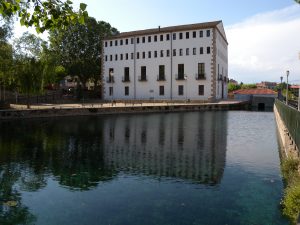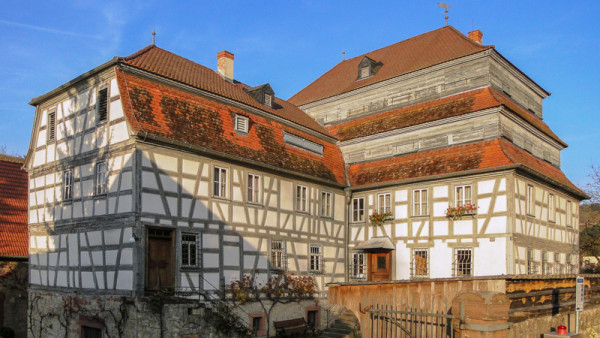Paper mills on the UNESCO list
Information about the initiative consisting in inscribing the most precious European paper mills on the UNESCO list The era of paper mills had begun in Europe in the 13th century. Several thousand paper mills where the paper was manufactured manually were created within the period of more than half a thousand years. Even if in the 20th century, a small number of former paper manufacturing facilities was still operational, and a few of them even survived until today, it should be assumed that traditional papermaking based on simple water powered machines and manual drawing of paper pulp on sieves was replaced by factories using papermaking machines during the 20th century. Only 30 former papermaking facilities have survived in Europe until today and they are the witnesses of historical manufacturing technology. Paper mill in Duszniki-Zdrój (Poland) constitutes one of the most interesting examples, and for 50 years, it houses the Museum of Papermaking. The museum in Duszniki is realizing the concept of preparing the application for inscribing several most precious historical paper mills on the UNESCO list. Papermaking museums in Poland (Duszniki-Zdrój), Czech Republic (Velkie Losiny) and Germany (Homburg) are currently cooperating in this field.
Duszniki-Zdrój (Poland)
The early days of papermaking in Duszniki date back to the period before the year 1562. Unfortunately, in 1601 the flood destroyed part of the buildings belonging to the facility. Gregor Kretschmer, a paper maker of that time, reconstructed the mill and in 1605 the papermaking process was resumed. The mill experienced its greatest splendour in the 17th and 18th century. At the time, papermakers from Duszniki were modernizing the production as well as decorated the mill, which became one of the most beautiful industrial facilities in Europe. Ornaments in the shape of rosettes and half-rosettes over the windows from the side as well as roof covers performed in the shape of scrolls, protecting the drying room against the driving rain, constitute unique elements, present exclusively in this mill. Equally exceptional are wall paintings performed in residential spaces of former papermakers. In the 18th century, a five-story mill and a six-story drying room became one of the highest buildings in Duszniki. The function of subsequent rooms was characteristic for numerous paper mills (paper manufacturing and treatment on the ground floor, drying spaces in the attics). In the 19th century, as a result of the development of machine paper manufacturing technique, the economic situation of the mill in Duszniki was gradually deteriorating. In 1905, in order to save the facility, Karl Wiehr, its owner at the time, installed in the building the machine manufacturing cardboard. Nevertheless, during the period of the economic crisis, Wiehr’s situation was becoming worse and worse and he stopped the production. In 1939, the paper mill was sold to the town, with the intention of creating a museum there. In 1945, the mill, the condition of which was in permanent decline, was taken over by the state. In the 1960s its renovation began and in 1968, the Museum of Papermaking was inaugurated. In 1971, the manufacturing of paper according to the historical technique was re-established. The museum in Duszniki is the biggest manufacturer of handmade paper in Poland and the only facility of this kind which on its own designs and manufactures sieves enabling the production of papers with watermarks. In 2011, the mill gained the status of the monument of history, which opened the way to inscribing it on the UNESCO world heritage list.
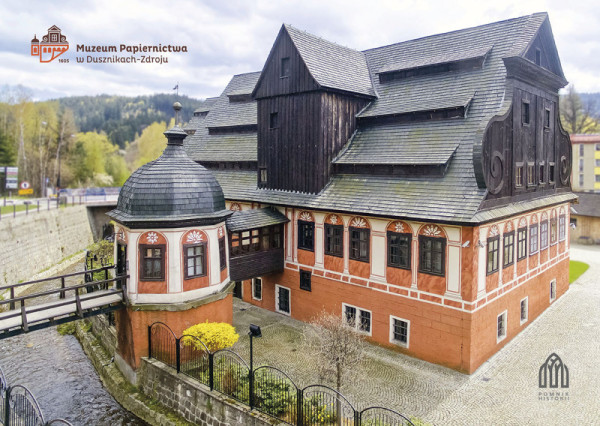
Velke Losiny (Czech Republic)
Paper mill in Velke Losiny was established in the years 1591-1596. At the turn of the 18th and 19thcentury, it acquired its current shape. In the 19th century, apart from big competition of modern paper factories, the facility in Losiny continued its activity according to the former technique. It resulted from the fact that handmade paper was applied for the manufacturing of filters for different branches of the industry. After the Second World War, the paper mill was nationalized and museum halls were created there. Until the year 2006, the mill was the property of a joint-stock company. In 2002, the paper mill was entered by the government of the Czech Republic into the register of national cultural monuments. It was also included on the UNESCO information list, which constituted the beginning of activities aiming at inscribing the facility on world heritage list. The paper mill in Velkie Losiny is a complex of several shingled brick and mortar buildings preserved in good condition. Similarly to the paper mill in Duszniki, the area on the ground floor was used for preparing raw materials as well as paper manufacturing and treatment. Multi-story attics served as drying rooms. In the museum section, information concerning the history of papermaking as well as manufacturing traditions in Velkie Losiny is displayed. Museum tour also includes a visit in the room where paper is drawn manually. Paper mill in Velke Losiny is one of the biggest manufacturers of handmade paper in Europe.
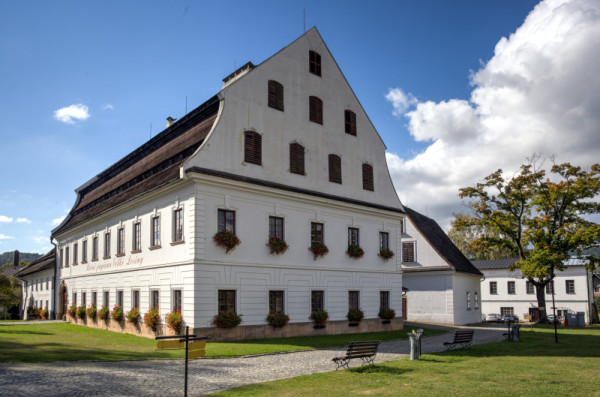
Homburg (Germany)
The paper mill in Homburg in Germany dates back to the year 1807. It is located by the Main River (Bavaria State). It was relocated there from Windheim beam after beam. The mill in Windheim dated back to the 17thcentury. In the 19th century, a small machine for the manufacturing of cardboard was installed in the mill. The building served similar functions as other paper mills: manufacturing was taking place on the ground floor and the paper was dried in the attics. The water wheel as well as other equipment from the old mill were preserved, together with the cardboard machine dating back to the second half of the 19th century. In 1997, after performing extensive renovation works, the Museum of Paper was inaugurated, together with the manufacturing facility. The facility is run by Johannes Follmer, the descendant of former papermakers, and the activity of the museum is financed by the Main-Spessart County.
Technisches Museum Papiermühle Niederzwönitz (Germany)
First mentioned in the court book of the town of Zwönitz dating back to 1568, the Niederzwönitz Paper Mill represents a vast number of similar workshops in the western Erzgebirge (Ore mountains) that completely vanished. Many of them were closely linked to mining activities during the so called second mining rush.
The historical watermarks of Niederzwönitz and Zwönitz – the Lion of Schönberg as well as the hammer and chisel – reflect the importance of mining for the local paper mills of the 16th century. The Schönbergs were the landlords of Niederzwönitz and owned the manufacture from 1660 to 1751. Watermarks dating back to the times of Gottfried Decker – the last tenant under the reign of the Schönbergs – can be found in music papers preserved in the archives of the Berlin singer-academy.
Between 1840 and 1868 as a result of multiple modifications, the paper mill was transformed into a cardboard factory. In the second half of the 19th century, the Winterman family inherited the manufacture. The preindustrial way of cardboard making was continued until 1973. In 1953 the paper mill was granted the status of a technical heritage. As soon as the manufacture’s last owner Eugen Wintermann retired, it was sold to the town of Zwönitz, to be later transformed into a museum – Technisches Museum Papiermühle Niederzwönitz.
Since 1984 the museum delivers a broad display of 400 years of traditional hand papermaking and preindustrial cardboard manufacturing. It shows the completely functioning and partly water-driven cardboard production line and the remains of traditional, preindustrial paper making in the Saxon Ore mountains that date back to 16th century. The functional layout of the building also includes the residential part, which paints a picture of the living conditions of the manufacturer’s family in the 1930s.
The floor plan and room layout of the older northern section of the building complex largely correspond to an ideal layout of German paper mills of the 17th century. The southern part, on the other hand, reflects key elements of early industrial paper and in particular cardboard production.
MORE INFORMATION ABOUT THE MUSEUM
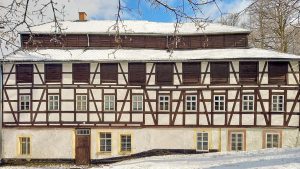
Il Museo della Carta di Pescia (Italy)
Le Carte paper mill is located in Pescia, Tuscany, in the area known as “Svizzera Pesciatina”. Over the centuries, this area has developed a flourishing manufacturing system characterized by water-powered paper mills, which until the mid-20th century was one of the largest paper production centers in the entire Italian territory.
Some records of the first active paper mill in the area date back to 1481. The real development of this industry began in the second half of the 18th century and continued throughout the 19th century.
The paper mill of Le Carte was built in 1725, with a first renovation in 1737 and subsequent modifications and extensions over the centuries to better adapt the spaces to the paper production cycle. The mill changed hands several times until 1860, when it was purchased by the Magnani family, who, thanks to their great expertise and entrepreneurial skills, were able to develop a great increase in production and gradually establish Magnani paper on the national and international markets, ensuring the supply of paper to numerous foreign countries, both for documents and for checks and paper money. Another line of production was that of graphic and artistic papers, which included the production of paper with watermarks of Napoleon and Marie Louise of Austria, as well as paper for many famous artists such as De Chirico, Picasso, D’Annunzio, Ungaretti and many others. In fact, the mill specialized in the production of watermarked handmade paper.
The mill was officially closed in 1992. Today the complex houses the Pescia Paper Museum, a museum of regional importance that is part of the National Museum System, and the Magnani Historical Archive which contains 700 meters of documents and is one of the most important company archives in Italy.
The Museum also has about 7 thousand items in its collections, namely watermarked paper forms, watermarked waxes, watermarked cloths, punches and stamps. The project of cataloguing the collections has been underway since 2008 and is the first of its kind in Italy.
The building ensures functional continuity between the container and its contents, preserving all the machinery necessary for the entire handmade papermaking process, which has become an integral part of the museum’s current itinerary.

Museu Molí Paperer de Capellades (Spain)
The “Molí de la Vila” paper mill is located in Capellades in the Anoia region, which had already established itself as a significant center for papermaking in Catalonia by the mid-18th century. Papermaking in Anoia had reached its peak by the end of the 18th century, with 46-47 mills in operation and a strong reputation reflected in the distribution of paper throughout Spain, its American colonies, and the Philippines. This expansion contributed to the preservation of 18th-century papermaking architecture, with many buildings surviving to this day.
The “Molí de la Vila” is located next to the basin of the Molí de la Vila – the core of one of the most important hydraulic systems in Spain. Originally, it was capable of producing 12 million liters daily, which were channeled to supply the “Costa Mills,” a complex of 16 mills located between the center of Capellades and the Anoia River.
The mill has deep roots, with references to its origins as a flour mill. The transition to a paper mill occurred in the mid-19th century. A 1859 agreement testifies the demolition of the existing flour mill. In 1862 the new paper mill had eventually been acquired by Jaume Ferrer i Roca, who constructed the building preserved until today. It was one of the largest paper mills in the region and can be considered one of the last complete constructions that still maintained a clear paper-making typology from 1860s.
The Molí de la Vila operated as a paper mill from 1868 to 1920. Its papermaking activity was interrupted in 1920 due to industrial and labor crises. In 1928 the Capellades City Council acquired the building and used it for municipal services.
On July 1, 1961 the Molí de la Vila was inaugurated as the Museu Molí Paperer. The museum preserves traditional papermaking activities, with a significant collection of documents and tools reflecting the evolution of papermaking in the region.
